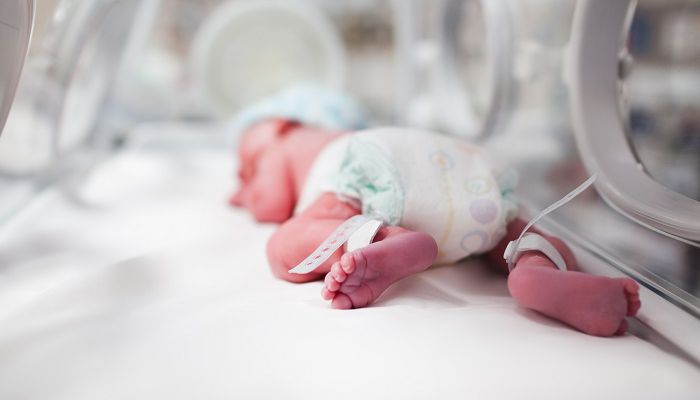Report on Adolescent Pregnancy in Turkey and its Implications for Sustainable Development Goals
1.0 Introduction and Executive Summary
Recent incidents and official statistics from Turkey indicate a persistent challenge regarding adolescent pregnancy, raising significant concerns about the protection of minors and the nation’s progress towards key Sustainable Development Goals (SDGs). Data from 2023 reveals that thousands of girls under the age of 18 gave birth, highlighting systemic issues that directly contravene SDG 3 (Good Health and Well-being), SDG 5 (Gender Equality), and SDG 16 (Peace, Justice, and Strong Institutions). This report analyzes the available data and expert commentary to assess the situation’s impact on sustainable development.
2.0 Statistical Findings on Adolescent Births
Official data from the Turkish Statistical Institute (TurkStat) and a report by the main opposition party (CHP) reveal alarming trends in adolescent births, which undermine progress on several SDG targets, particularly those related to health, education, and gender equality.
2.1 2023 Data (TurkStat)
- A total of 6,505 girls aged 15 to 17 gave birth.
- Within this group, 535 girls became mothers for the second time, and 31 for the third time, indicating a failure to protect vulnerable minors and a direct challenge to SDG 5.3 (eliminate child marriage).
- An additional 130 girls under the age of 15 gave birth, with four of them experiencing a second birth. This directly violates SDG 16.2, which calls for an end to abuse, exploitation, and all forms of violence against children.
2.2 Historical Data 2003-2021 (CHP Report)
- Between 2003 and 2021, a total of 1,755,375 adolescents aged 10-19 gave birth.
- Of these births, 27 percent involved girls younger than 17.
- A total of 15,601 births were recorded among girls under the age of 15.
- Multiple repeat pregnancies were documented, with some minors giving birth up to four times before reaching adulthood, severely impacting their ability to achieve SDG 4 (Quality Education) and SDG 3 (Good Health and Well-being).
3.0 Institutional Response and Accountability
Advocacy groups have criticized the government’s response, citing a failure to implement protective measures and ensure justice, which compromises the principles of SDG 16 (Peace, Justice, and Strong Institutions).
3.1 Critiques from Civil Society
- Failure of Protective Measures: The SOL Feminist Movement attributes the rise in child births to a lack of deterrent and protective policies, arguing that lenient sentencing encourages perpetrators. This points to a gap in achieving SDG 16’s goal of effective and accountable institutions.
- Lack of Proactive Investigation: The Women and Children First Association states that every pregnancy under 18 must be investigated as sexual abuse, and criticizes the state for not acting proactively. This inaction undermines SDG 5.2 (eliminate all forms of violence against women and girls).
- Data Transparency Issues: The CHP report accuses the government of concealing the scale of the problem by removing older data, making long-term analysis impossible and hindering efforts to build the transparent institutions required by SDG 16.6.
4.0 Legal and Social Context
The legal framework in Turkey presents contradictions that, combined with social practices, create vulnerabilities for young girls and impede the realization of SDG 5 (Gender Equality).
- Legal Age of Consent: The legal age for consent is 18. Any sexual activity with a person younger than this is prosecutable.
- Marriage Age Exceptions: While the legal age for marriage is 18, it can be lowered to 17 with parental consent. This exception creates a legal pathway that can conflict with the goals of SDG 5.3 to end child marriage.
- Informal Marriages: The widespread practice of informal or religious marriages, which are not legally registered, further complicates efforts to protect minors and ensure their rights to health, education, and a life free from violence.
- Child Marriage Rates: According to Girls Not Brides, an estimated 15% of girls in Turkey are married before 18, one of the highest rates in Europe, representing a significant barrier to achieving gender equality.
Analysis of Sustainable Development Goals in the Article
1. Which SDGs are addressed or connected to the issues highlighted in the article?
-
SDG 3: Good Health and Well-being
The article’s central theme is teenage pregnancy and childbirth in Turkey. This directly relates to the health and well-being of adolescent girls and their children. The data on thousands of girls aged 15-17 and even under 15 giving birth highlights significant public health challenges, including risks associated with early pregnancy for both mother and child.
-
SDG 5: Gender Equality
This goal is addressed through the article’s focus on issues that disproportionately affect girls, such as child marriage, sexual abuse, and lack of protection. The article quotes women’s rights advocates who criticize the government’s failure to protect girls, framing the issue as a violation of their rights and a consequence of gender inequality. The mention of high rates of child marriage (“15 percent of girls married before 18”) is a core concern of SDG 5.
-
SDG 16: Peace, Justice and Strong Institutions
The article connects the issue of teenage pregnancies to failures within the justice system and governmental institutions. It highlights a lack of enforcement of protective measures, “lenient sentencing and impunity” for perpetrators, and the state’s failure to investigate cases of child pregnancy as sexual abuse. This points to weaknesses in the rule of law and the state’s capacity to protect its most vulnerable citizens, which are key aspects of SDG 16.
2. What specific targets under those SDGs can be identified based on the article’s content?
-
Target 3.7: Ensure universal access to sexual and reproductive health-care services
The high number of adolescent births reported (“6,505 girls aged 15 to 17 gave birth in 2023”) directly points to challenges in achieving this target. Teenage pregnancy is a key indicator of a lack of access to or use of family planning, information, and education on sexual and reproductive health.
-
Target 5.2: Eliminate all forms of violence against all women and girls
The article explicitly frames teenage pregnancy as a result of violence. An advocate is quoted stating, “every pregnancy under 18 must be investigated as sexual abuse.” The discussion of “abuse and violence against girls” having increased directly relates to this target.
-
Target 5.3: Eliminate all harmful practices, such as child, early and forced marriage
The article directly addresses this target by citing data on child marriage in Turkey: “an estimated 15 percent of girls married before 18 and 2 percent before 15.” It also mentions that “informal or religious marriages, which are not legally registered, remain widespread,” linking this harmful practice to the high rates of teenage pregnancy.
-
Target 16.2: End abuse, exploitation, trafficking and all forms of violence against and torture of children
This target is central to the article’s argument. The debate is framed around “child abuse and the government’s failure to protect minors.” The pregnancies of girls under the legal age of consent (18) are presented as evidence of sexual abuse and exploitation of children, making this target highly relevant.
3. Are there any indicators mentioned or implied in the article that can be used to measure progress towards the identified targets?
-
Indicator 3.7.2: Adolescent birth rate (aged 10-14 years; aged 15-19 years)
The article provides specific data that directly measures this indicator. It states that in 2023, “6,505 girls aged 15 to 17 gave birth” and “130 girls under 15 gave birth.” It also provides historical data, such as “1,755,375 adolescents aged 10–19 gave birth in Turkey between 2003 and 2021.” These figures serve as direct quantitative measures of the adolescent birth rate.
-
Indicator 5.3.1: Proportion of women aged 20-24 years who were married or in a union before age 15 and before age 18
The article explicitly cites data for this indicator from the ‘Girls Not Brides’ campaign: “an estimated 15 percent of girls married before 18 and 2 percent before 15.” This provides a clear metric for the prevalence of child marriage in the country.
-
Implied Indicator for 16.2.1 (Proportion of children experiencing violence):
While not providing a direct percentage for this official indicator, the article uses the number of adolescent pregnancies as a proxy indicator for child sexual abuse. The assertion that “every pregnancy under 18 must be investigated as sexual abuse” implies that the 6,635 births to girls under 18 in 2023 are indicators of the prevalence of child abuse.
-
Qualitative Indicators for Justice and Institutional Failure (Targets 16.2 and 16.3):
The article provides qualitative indicators of institutional failure. These include statements about the government’s “failure to enforce deterrent and protective measures,” “lenient sentencing and impunity,” and the accusation that the government is “concealing the scale of child pregnancies.” These descriptions measure the lack of progress in building effective and just institutions to protect children.
4. Summary Table of SDGs, Targets, and Indicators
| SDGs | Targets | Indicators Identified in the Article |
|---|---|---|
| SDG 3: Good Health and Well-being | 3.7: Ensure universal access to sexual and reproductive health-care services. | Indicator 3.7.2 (Adolescent birth rate): The article provides specific numbers: “6,505 girls aged 15 to 17 gave birth in 2023” and “130 girls under 15 gave birth.” |
| SDG 5: Gender Equality | 5.2: Eliminate all forms of violence against all women and girls. | Implied Indicator (Prevalence of sexual abuse): The number of pregnancies in girls under 18 is used as a proxy for sexual abuse, as “every pregnancy under 18 must be investigated as sexual abuse.” |
| 5.3: Eliminate all harmful practices, such as child, early and forced marriage. | Indicator 5.3.1 (Prevalence of child marriage): “an estimated 15 percent of girls married before 18 and 2 percent before 15.” | |
| SDG 16: Peace, Justice and Strong Institutions | 16.2: End abuse, exploitation… and all forms of violence against… children. | Implied Indicator (Prevalence of child abuse): The total number of births to minors (6,635 in 2023) is presented as evidence of widespread child abuse that the state is failing to prevent. |
| 16.3: Promote the rule of law… and ensure equal access to justice for all. | Qualitative Indicator (Lack of Justice): Statements on “lenient sentencing and impunity,” the government’s “failure to protect minors,” and the need for the state to act “without waiting for a complaint.” |
Source: turkishminute.com







